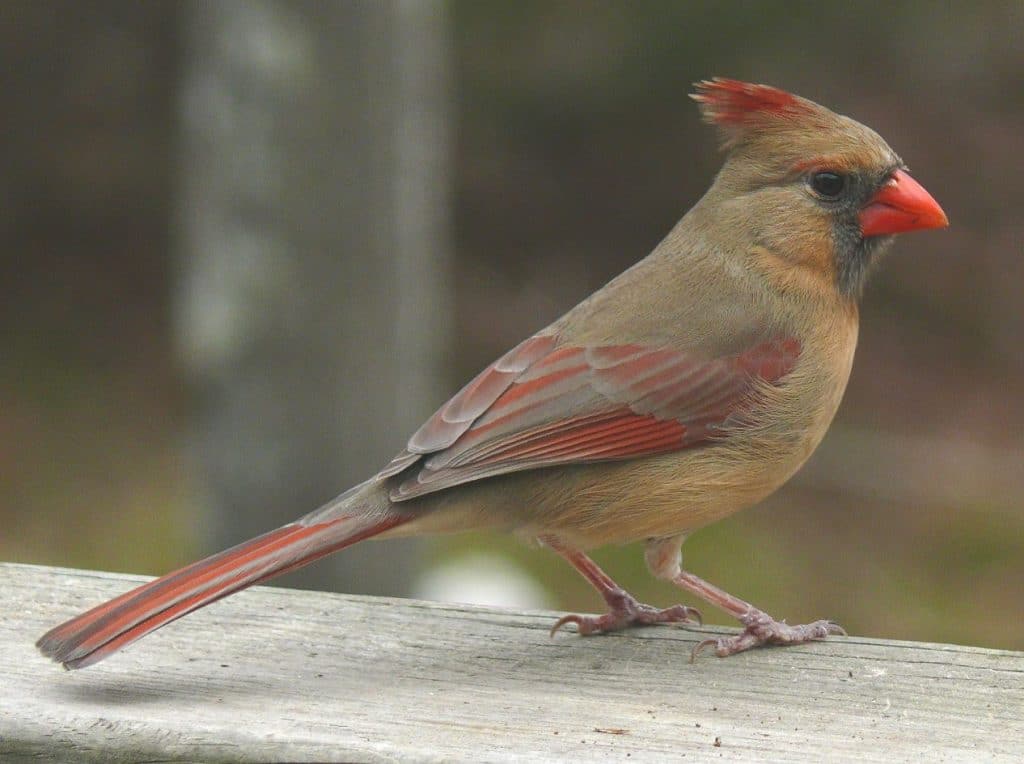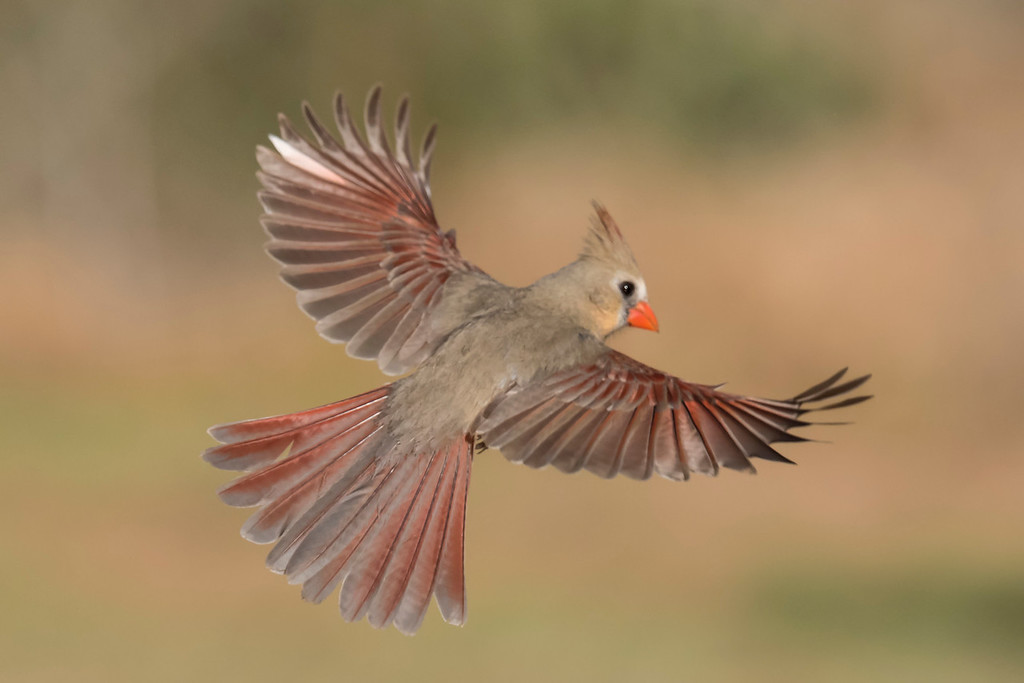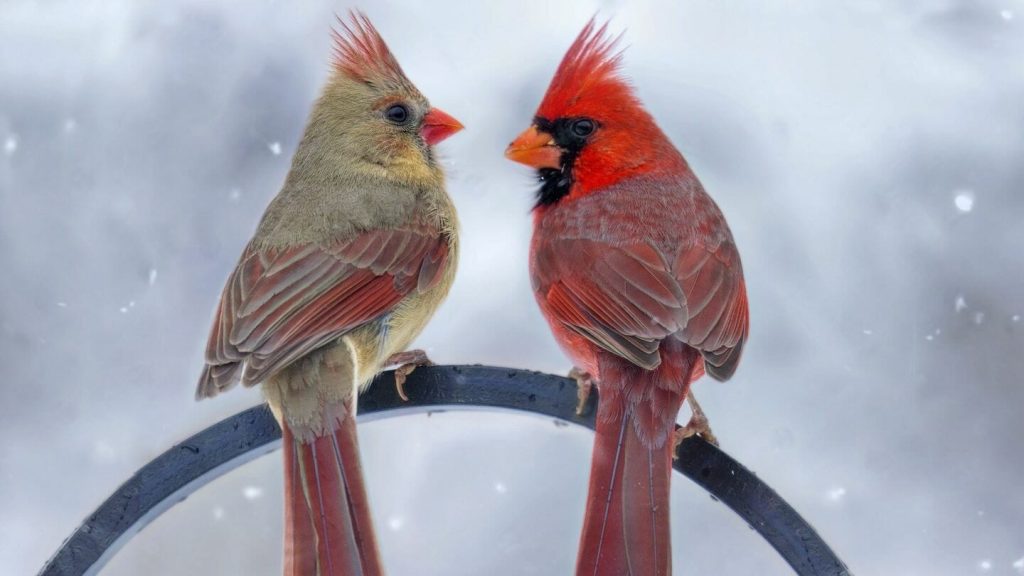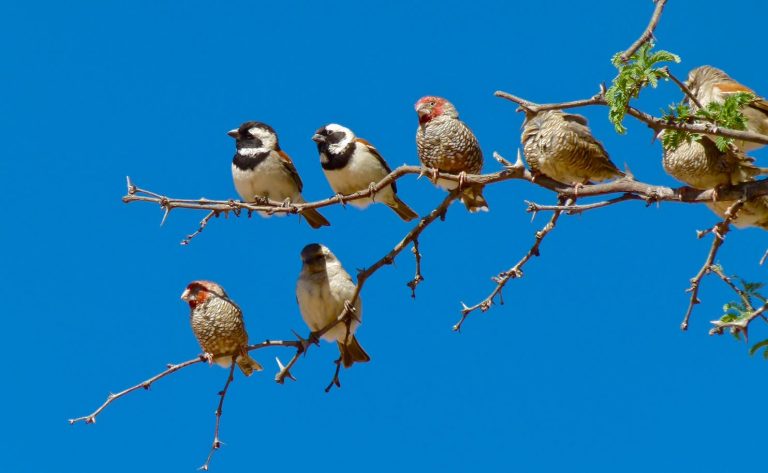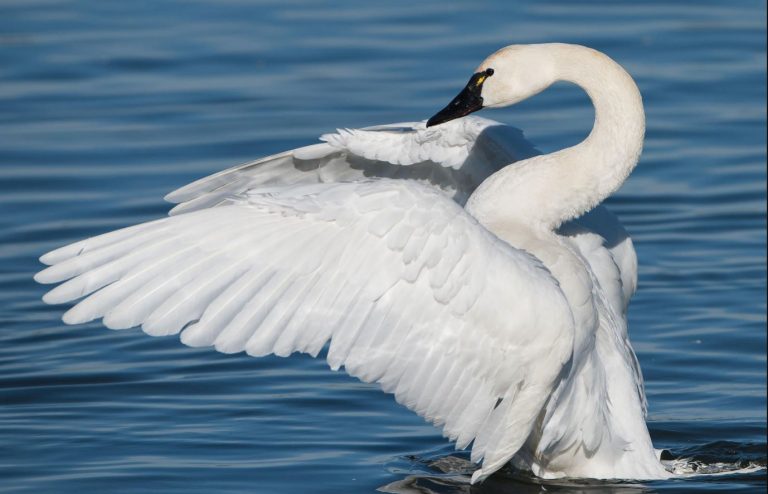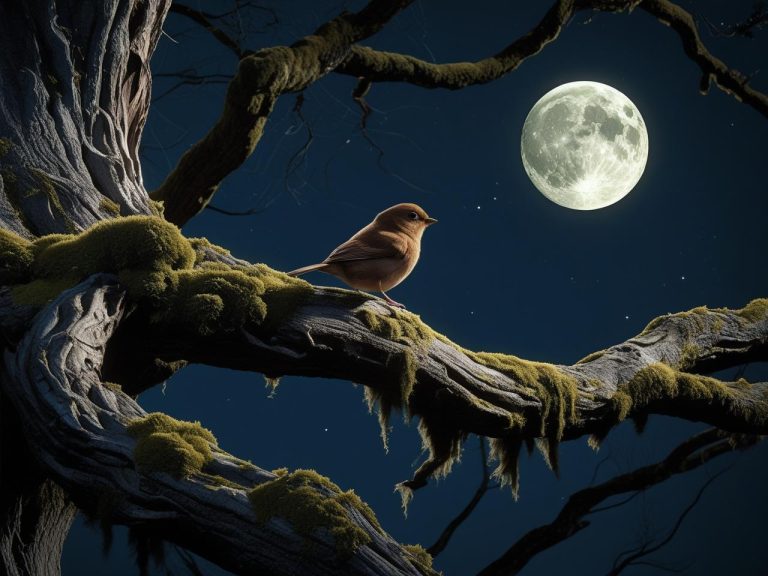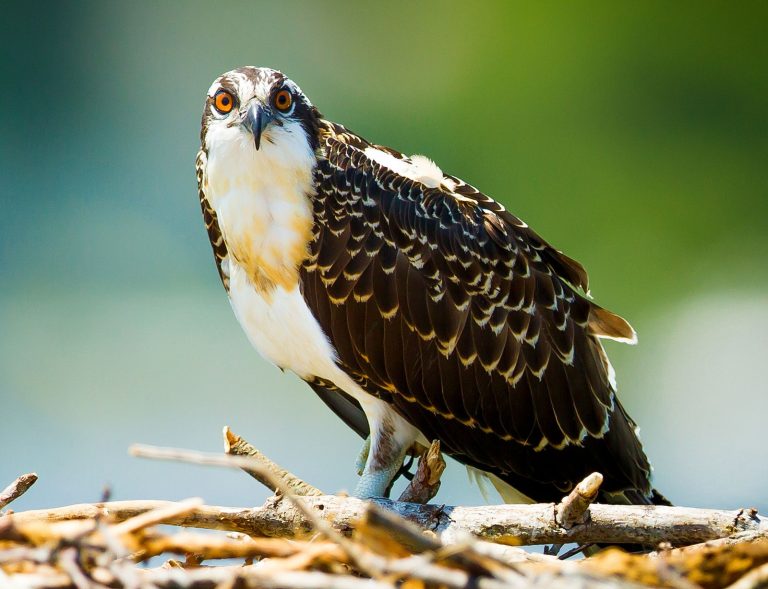Female Cardinal Bird: How to Identify This Stunning Songbird in Your Backyard
If you’ve ever spotted a delicate, brownish-red bird flitting through the shrubs or perched quietly on a branch, you may have just encountered a female cardinal. Often overshadowed by her brilliant red male counterpart, the female cardinal bird is a beauty in her own right—understated, elegant, and just as captivating.
In this complete identification guide, we’ll explore what makes the female red bird stand out, how to distinguish her from similar species, and why she’s a cherished guest in many American backyards.
What Is a Female Cardinal?
The female cardinal is the female of the Northern Cardinal (Cardinalis cardinalis) species, a beloved songbird found across North America. While the male cardinal is famous for his bold crimson plumage, the female cardinal sports a more subtle palette—but no less charming.
Quick Facts:
- Scientific name: Cardinalis cardinalis
- Length: 8.3 to 9.1 inches
- Wingspan: 9.8 to 12.2 inches
- Habitat: Woodlands, gardens, shrublands, and suburban backyards
- Diet: Seeds, berries, insects, and grains
Female Cardinal Appearance: Beauty in Earth Tones
One of the most frequently asked questions is: What does a female cardinal look like?
Plumage:
Unlike the fiery red of the male, the female cardinal is cloaked in warm tones of soft brown, buff, and tawny, with reddish tinges on her wings, tail, and crest. This coloration helps her blend into the environment—especially important during nesting season.
She is sometimes affectionately referred to as a brown cardinal for this reason, but make no mistake: her subtle reds and glowing undertones give her a beauty all her own.
Crest:
Like the male, the female cardinal also sports a distinctive crest—a raised tuft of feathers on her head that gives her an unmistakable silhouette.
Beak:
Both male and female cardinals have thick, cone-shaped beaks that are a bright orange-red, perfect for cracking seeds.
Eyes and Mask:
The female’s facial mask is usually a softer gray or dark brown, compared to the male’s bold black mask.
Female Cardinal vs Male Cardinal: Key Differences
| Feature | Female Cardinal | Male Cardinal |
|---|---|---|
| Plumage Color | Brown with red highlights | Bright red all over |
| Mask Color | Gray or brown | Black |
| Overall Tone | Earthy, subdued | Vivid, striking |
| Camouflage | Excellent for nesting | More visible to predators |
These differences help the female red bird stay well-hidden during nesting, while the male’s bright color is used to establish territory and attract a mate.
Sounds and Songs: Yes, She Sings!
Many people are surprised to learn that the female cardinal bird sings—and not just a little. She sings often, and beautifully. Unlike many bird species where only the male vocalizes, both male and female cardinals are accomplished singers.
In fact, the female’s song is often more complex and subtle than the male’s. She typically sings from within dense shrubs or nearby nesting areas, using her voice to communicate with her mate or signal threats. Some researchers believe her singing even plays a role in timing egg laying and coordinating parental duties.
What to Listen For:
- Series of clear whistles and trills
- Phrases of 2–3 second musical notes, repeated rhythmically
- Often more “fluid” or “melodic” than the male’s version
- Typically delivered from hidden locations, such as a thicket or brush pile
🔊 Listen to a real female cardinal call here:
Macaulay Library – Female Northern Cardinal Song
(Recording by Martha Fischer, © Macaulay Library, Cornell Lab of Ornithology)
Hearing the female cardinal sing is a treat for backyard birders—it adds a layer of magic and mystery to your morning chorus. If you listen carefully, you’ll begin to notice subtle differences between the male and female vocalizations, giving you an entirely new way to appreciate and identify this stunning brown cardinal.
Behavior and Habits
The female cardinal is a non-migratory bird, meaning she can be seen year-round in most of her range. She’s most active during early morning and late afternoon.
Nesting:
- Typically builds nests in dense shrubs or low trees
- Uses twigs, grass, and even hair to construct the nest
- Lays 2 to 5 eggs per clutch
Feeding:
- Enjoys sunflower seeds, safflower, berries, and mealworms
- Will visit backyard feeders, especially during winter
- Often seen foraging on the ground beneath shrubs
Interaction:
- Monogamous; forms pair bonds with one male
- Tends to be more reserved than the male, especially around humans
Where to Spot Female Cardinals
You don’t need to trek into remote forests to catch a glimpse of a female cardinal bird. These elegant songbirds are wonderfully adaptable and can often be found in familiar spaces—sometimes just outside your window.
Common Regions:
The female cardinal is most commonly found in:
- The Eastern and Central United States, stretching from Maine to Texas and as far west as the Dakotas
- Southern parts of Canada, particularly Ontario and Quebec
- Parts of Mexico, including the northeastern and central highlands
They’ve also expanded their range over the years, thanks to increasing suburban development and the popularity of backyard bird feeders.
Best Habitats:
Despite their delicate appearance, female red birds are highly adaptable and thrive in a variety of semi-open environments, especially those with thick vegetation. You’ll often find them in:
- Suburban gardens and backyards – Especially those with bird feeders, native shrubs, and fruit-bearing plants.
- Forest edges and woodlands – They prefer transition zones between dense forests and open areas.
- Overgrown fields, thickets, and hedgerows – These provide excellent nesting and foraging opportunities.
- Urban parks and landscaped areas – Even in busy cities, cardinals can flourish in green spaces with adequate cover and food.
Unlike migratory species, female cardinals stay close to home all year long. This means once you’ve attracted one to your yard, there’s a good chance she’ll return again and again—especially if you provide food, water, and shelter.
Bonus Tip:
Want to turn your yard into a cardinal magnet? Start by planting native shrubs like dogwood, elderberry, serviceberry, or viburnum. These not only provide shelter but also supply the fruits and insects cardinals love.
With a little planning, your outdoor space could become a year-round retreat for these stunning brown cardinals, offering a front-row seat to their graceful presence every day.
How to Attract Female Cardinals to Your Yard
Want to see this stunning brown cardinal more often? Female cardinals may be less showy than their male counterparts, but they’re just as likely to visit your backyard—if you create the right environment. Here’s how to make your space irresistible to them:
1. Offer the Right Foods
Food is the quickest way to a cardinal’s heart, and the female cardinal has a few favorites that you can easily provide.
- Black-oil sunflower seeds – These small, oil-rich seeds are a top choice. Easy to crack and full of energy.
- Safflower seeds – A cardinal favorite that also deters squirrels and some other birds.
- Cracked corn and unsalted peanuts – Great for ground feeding; cardinals often forage below feeders.
- Fresh fruit – Offer sliced apples, grapes, or berries on platform feeders or flat surfaces to mimic natural foraging.
Female cardinals especially benefit from high-energy foods during nesting and cold months, so keep feeders stocked year-round.
2. Use the Right Feeders
Cardinals, especially females, prefer feeders that are sturdy and spacious. Their larger body size and cautious nature mean they avoid tight or wobbly setups.
- Platform feeders – Flat and open, these give cardinals plenty of room to perch and feed comfortably.
- Hopper feeders – Covered and roomy, they protect seed from the elements and offer an easy landing space.
- Avoid tube feeders – Narrow perches make these tricky for cardinals to use, especially for females who tend to be more reserved.
Place feeders near shrubs or trees so female cardinals can easily dart to safety.
3. Provide Shelter and Nesting Spots
Shelter is essential, not just for attracting cardinals, but for helping them nest and raise young.
- Plant dense, native shrubs like dogwood, holly, cedar, or elderberry. These offer both food and cover.
- Include evergreens for year-round protection from predators and harsh weather.
- Native plants also supply nesting materials (twigs, grasses) and host insects, a key protein source during breeding.
Female cardinals prefer low, hidden nesting spots, often 3 to 10 feet off the ground—so think bushy rather than lofty when planning your garden.
4. Keep a Clean Water Source
Fresh water is a magnet for all birds, but cardinals especially appreciate an accessible, quiet source to drink and bathe.
- Install a bird bath with gently sloped sides and no more than 2 inches of water depth.
- Keep it clean to prevent algae and disease.
- In winter, use a heated bird bath or regularly replace frozen water to keep the birds coming.
Position the bath near cover so cardinals can safely approach and retreat.
With these thoughtful touches, your yard can become a year-round haven for the female cardinal bird. Give her food, safety, water, and peace—and she just might reward you with her quiet presence and soft, whistled song.
Similar Birds Often Mistaken for Female Cardinals
Because of their subdued coloring, female cardinals are sometimes mistaken for other species. Watch closely for these subtle distinctions:
1. Pyrrhuloxia (Desert Cardinal)
- Found in the Southwest
- Gray body with red face and crest
- Smaller and more slender than cardinals
2. House Finch
- Brown and streaked
- Smaller than a cardinal
- No crest
3. Northern Mockingbird
- Gray with white wing patches
- Very different beak and no crest
If the bird you’re seeing has a reddish crest, orange beak, and sings from dense shrubs—it’s almost certainly a female cardinal bird.
The Symbolism of the Female Red Bird
Cardinals hold deep symbolic meaning in many cultures. While the bright male often takes the spotlight, the female red bird is equally significant.
Common Symbolism:
- Hope and endurance during tough times
- Balance between strength and gentleness
- Spiritual messengers in times of grief or joy
Seeing a female cardinal may be a subtle sign that beauty exists even in quiet moments.
Final Thoughts: Don’t Overlook the Female Cardinal
While the male cardinal may steal the show with his flashy red feathers, the female cardinal brings a quiet, earthy elegance that’s just as enchanting. With her warm tones, melodic voice, and gentle demeanor, she’s a delightful guest in any backyard.
Next time you see a “brown cardinal” perched among the branches, take a moment to appreciate the grace of the female cardinal bird. Whether you’re a seasoned birder or a curious beginner, she’s sure to leave a lasting impression.
Want to learn more about cardinals and other beautiful backyard birds? Explore more guides and birding tips at WildBirdLady.com.
Frequently Asked Questions (FAQ)
What color is a female cardinal?
The female cardinal is mostly light brown with warm reddish highlights on her wings, tail, and crest. She also has a bright orange-red beak and a subtle facial mask.
Do female cardinals sing?
Yes! Female cardinal birds sing beautiful, complex songs, often while nesting. Their songs help communicate with mates and mark their territory.
How can I attract a female cardinal to my yard?
Offer foods like sunflower and safflower seeds, plant dense shrubs, provide fresh water, and use open-style feeders. These features will help attract both male and female cardinals.
Is the female cardinal the same species as the male?
Yes. Both male and female cardinals belong to the same species, Cardinalis cardinalis. They simply have different plumage for biological and behavioral reasons.
Why is the female cardinal less colorful?
Her subdued tones provide camouflage during nesting season, protecting her and her eggs from predators. This natural adaptation helps increase survival rates.
Can I see female cardinals in winter?
Absolutely. Female cardinals are non-migratory and often visit backyard feeders during the colder months, making them a year-round delight for birdwatchers.
Are female cardinals rare?
Not at all. They’re just as common as males, but their earth-toned plumage makes them less noticeable. With the right setup, you’ll see them often in your backyard.
What is a brown cardinal?
A “brown cardinal” typically refers to the female Northern Cardinal. While not truly brown, she features a soft tan or buff color with reddish highlights. This subtle coloring helps her stay hidden while nesting and makes her a bit harder to spot than the bright red male.


